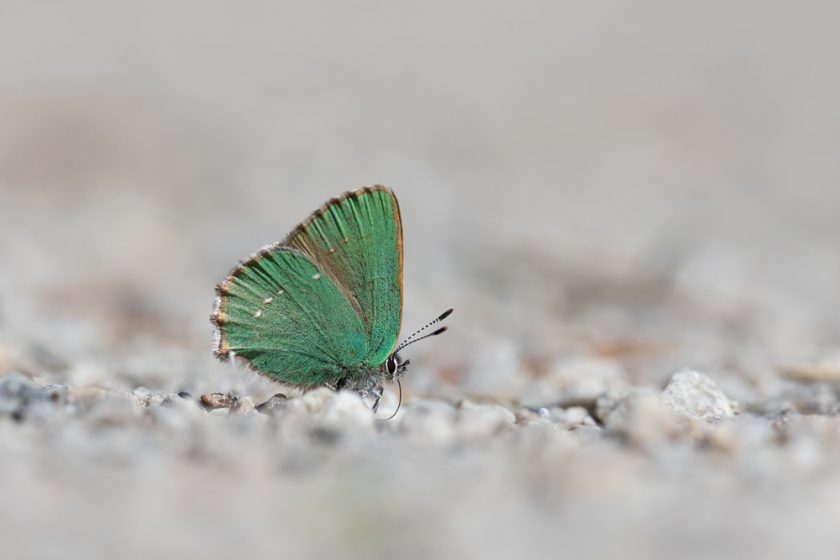There is one particular butterfly species that was constantly present during my stay in Sweden: the Green Hairstreak (Callophrys rubi). Never before in over a decade of butterfly photography have I seen so many Green Hairstreaks insuch a short time.
While strolling alongside one of the many lakes in Sweden I befriended this little fellow. Despite gusts of wind I got this nice result against a black background. Pretty pleased with the result!

The sharp observer may have noticed in the EXIF that my trusted Canon EF 300mm f/2.8L IS USM is no longer with me. I sold it a few months ago, despite being very fond of it for its sharpness, reliability and incredibly fast autofocus. Actually it was the Canon 7D Mark II that was in for a change and not so much the lens. I noticed very considerable noise in the high ISO’s in the rainforests in Ecuador and wanted to benefit from the improved noise performance of the newest generation of cameras. And that meant switching to mirrorless, in my case a Canon R6. To complete the combo I selected a Canon RF 100-500mm f/4.5-7.1L IS USM.
I fell in love with the new lens very quickly. It performs absolutely amazing: razorsharp, lightweight, very well built and you get to zoom as a bonus feature. It also sports a very short Minimum Focus Distance (MFD) which comes in handy with butterfly photography. This is where it really outperforms my old EF 300mm.
The R6 on the other hand took me a long time to get accustomed to: the camera needs quite some time to “wake up” when you push a button and for the viewfinder to show an image: I already missed a couple of shots that I would not have missed with the old combo. Also, the electronic viewfinder’s resolution does not come near what the human eye can see through a DSLR’s viewfinder, so sometimes I struggle to actually see my subject. Despite these drawbacks, I also took some amazing shots that I would never have taken otherwise because of the worldclass eye tracking. The camera can find a subject in an instant and stays glued to it, no matter what. So as with all gear, it has its pros and cons and you just have to learn to live with the cons while making the most of the pros.
The R6 is a fullframe camera capable of very shallow depth of field, certainly when combined with the tele zoomed out to 500mm at the MFD. Look at this stunningly small depth of field which yields a very nice blurry background even at f/8.

Here’s the same butterfly at the same spot, but now taken with my 100mm macro. As I was able to crawl very close, the level of detail on the butterfly has increased and you can actually see the individual scales on the wing (at least I can with the full-size photo). Such is the power of this superb macro lens. On the other hand, the butterfly is not as isolated from its environment as on the photo above. Never would have guessed that the tele would actually produce even blurrier images than my macro!

Now, this nicely shows what two different lenses can do with the same subject and what creative possibilities this brings to the butterfly photographer!
After almost seven weeks in Sweden I have now returned to The Netherlands and hope to make the most of the Dutch butterfly season. Hopefully I can get back to you soon with more stories to tell.
